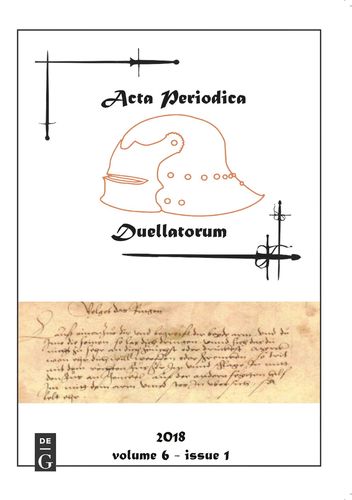Visualizing the Fight Book Tradition
Collected Martial Knowledge in the Thun-Hohenstein Album
Keywords:
Thun-Hohenstein album, fight books, Fechtbuch, codicology, manuscript studies, book painting, comparative analysis, image and memory, collectingAbstract
The Thun-Hohenstein album, long-known as the Thun’sche Skizzenbuch, is a bound collection of 112 drawings that visualize armoured figures at rest and in combat, as well as empty armours arrayed in pieces. The collection gathers drawings that span the period from the 1470s to around 1590. While most of the images were executed in Augsburg during the 1540s, the album’s three oldest drawings date to the late-fifteenth century. Two of these works, which form a codicological interlude between the first and second quires, find parallels in the illustrations of contemporaneous martial treatises. This article traces the pictorial lineages of these atextual images through comparative analyses of fight books produced in the German-speaking lands, and considers how the representational strategies deployed in martial treatises inflected the ways that book painters and their audiences visualized the armoured body. This exploration situates a manuscript from which one of the drawings derives, Peter Falkner’s Art of Knightly Defense, now in Vienna, within the Augsburg book painters’ workshops that would later give rise to the Thun album. Finally, this study considers how the transmission and representation of martial knowledge in late fifteenth- and early sixteenth-century Augsburg contributed to the later depictions of armoured bodies that populate the album.Downloads
Download data is not yet available.
Downloads
Published
2018-07-25
Issue
Section
Articles
License
Copyright (c) 2018 Chassica Kirchhoff

This work is licensed under a Creative Commons Attribution-NonCommercial-NoDerivatives 4.0 International License.
How to Cite
Kirchhoff, C. (2018). Visualizing the Fight Book Tradition: Collected Martial Knowledge in the Thun-Hohenstein Album. Acta Periodica Duellatorum, 6(1), 3-45. https://bop.unibe.ch/apd/article/view/6864



